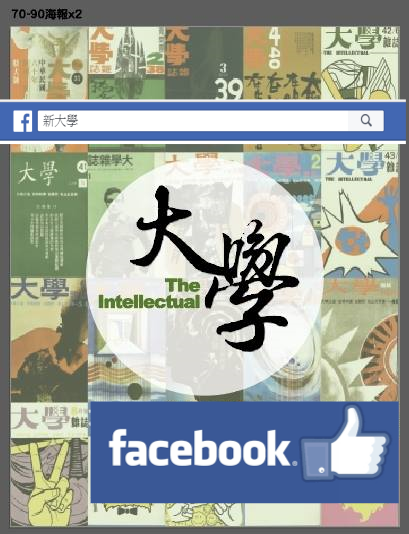♦ 本文內容轉載自: 中美論壇專刊 US-China Forum (Chinese) ♦
Debt would be a bad thing if it could not be managed properly. In modern economic theory, capital is the necessary fuel for keeping the economy churning and debt or loan is the necessary oil for lubricating the economic engine. Managing debt is a challenge on either a personal or a national level. The traditional philosophy particularly in the Orient preaches debt-free and savings, whereas in the modern world, the developed or developing countries have been accustomed to a credit system encouraging borrowing thus making debt management a vital skill, on both personal and national levels. Personal debt is often expressed in absolute dollars whereas national (Government) debt tends to be expressed in terms of percentage of national Gross Domestic Product (GDP), the U.S. (105.4%), China (47.6%), and Africa (9.95-125.3% for its 51 countries). The top ten in-debt nations are Japan (253%), Greece, Lebanon, Italy, Portugal, Cape Verde, Congo, Singapore, Bhutan, and the U.S. (105.4%), in terms of percentages of GDP. The economic health of a nation is judged on its ability of managing debt and assets to guarantee payback of debt in time.
The American debt (105.4% of GDP-$19,391B, 2017) is equivalent to $20.438 trillion dollars. However, the U.S. is the wealthiest country valued at $93.560T, about 4.5 times of her debt. By straight math, the national debt of the U.S. is less than 22% of her assets, far below a bankruptcy level. The population of the U.S. is 324.5 million (2017). Thus every American shares $62,991 national debt. It is this figure that worries the American citizens and the international debt market. From debt management point of view, it is illogical to expect each American citizen to bear and pay off $63K, so the government must manage it by selling the Treasury bills to extend the loans or getting the cash to pay off maturing debt and refinancing new debt. So long as the debt is not reaching close to the National assets; this refinancing scheme of pushing debt down the road is a workable scheme. Of course, this scheme requires other nations or individuals or corporations to buy the Treasury bills to support refinancing. Most trading partners of the U.S. with a trade surplus hold US Treasury bills, T-bonds or notes. China used to hold over three trillion dollars of Treasury securities one time, now maintaining at 1.2 trillion (6/2018, Japan now holds about 1 trillion).
Loans or debts always carry interest, the more debt a nation owes, the more interest its government must pay each year. This interest burden is eating a big chunk of the U.S. budget or tax revenue. For fiscal year 2016, the interest payment was about $271B, 6.8% of total federal expenditure (474.5B for 2017). The debt interest payment has risen up 27% over the past decade, luckily at a low interest rate. As of June 2017, about 28% of the American debt (19.39T) is owed to Social Security (~$5.45B). Generally an internal (inter-government) debt is not as serious as foreign debt; however, the Social Security Program is a ‘pay benefits as you collect taxes’ program with surplus put in a trust fund and invested in Treasury securities. Starting 2018, Social Security payouts will begin to draw its trust fund reserve, which means, its earned interest is no longer sufficient to pay for all the benefits. The Social Security trust fund may be depleted by 2034 (sixteen years away), thus it faces two issues, one, the government must implement a tax scheme to build up its reserve to avoid bankruptcy and two, its investment in Treasury securities must be secure. Understanding the above debt discussion, we realize that the U.S. is not healthy financially. If no one buys the U.S. Treasury bills, the U.S. government and its Social Security Program will be in trouble. The trade war U.S. initiated may temporarily add cash to the Treasury but it won’t solve the American debt problem unless fundamental fiscal policy, industrial revitalization and life-style moderation are introduced to reduce the heavy American debt.
China’s debt according to IMF is at 47.6% of her GDP ($12015B 2017), $5719B, much less than the US debt. However, many economists caution that China’s total debt is much more than the ‘government debt’ indicated. Some claim China’s debt size is over 300% of her GDP due to her stimulus measures after the recent global financial crisis and her loose credit practice fueling her economic growth. This dire warning has been quieted down simply because the Chinese Central Bank has taken measures to stabilize credit market and keep her economy humming at a healthy 6-7% growth rate. The Chinese debt mountain is protected behind ‘Great Wall’ avoiding foreign capital manipulation. Western economists do acknowledge that China is able to avert financial/debt crisis but insisting her debt problem remaining a serious burden to her economy.
China has stepped up on the world stage becoming a significant creditor nation, lending money to other nations to fund their infrastructure and economic development, recently through her Belt Road Initiative (BRI). Some economists regard the above Chinese loans as a problem, citing examples: lending Venezuela $60B and Argentina tens of billions, both country facing economic problems. Argentina has applied to the IMF for a bailout. They also cite China loans being of questionable value, for example, China built a high-speed railroad line in Kenya currently operating at 20% of break-even level. Similarly, China has built a high-speed railroad in Laos and a new port for Sri Lanka with generous low interest loan terms (for Laos) and a 99-year port lease as payback(with Sri Lanka). Some economists regard these loans as problematic and compare them to the bad experience of Latin American debt crisis in the 1980’s. However, we must point out that although the debt structures are similar, China’s loans are based on a very different motive, a true win-win and long-term mutual-benefit basis. It is true China needs money to deleverage credits for her local banks to dissolve Chinese corporation debts, but China’s government foreign debt is low. It is true that a rise in borrowing or credits without significant economic gains potentially will crush the Chinese corporations but they seem to perform well.
This may be why that the U.S. launches a ‘trade-plus’ war against China, intended to disrupt the current ‘red manufacturing chain’ (will hurt Chinese corporations but also US corporations), to sabotage China’s BRI (will impact world economy) and to stop China’s 2025 Manufacture Plan (may backfire to accelerating it) hoping ultimately crushing Chinese corporations and their industrial base. Whether the US ‘trade-plus’ strategy will hurt China badly or not is hard to predict but the trade tariff does not solve the U.S. own debt problem in the long run. Some economists even predict that the collapse of China’s economy would be a big blow to corporate America. China’s debt problem is very different from the US debt problem. China seems to be able to manage her debt problem and regulate her credit structure if no external intervention. Hence, China is carefully handling the strategic issues triggered by the U.S. ‘trade-plus’ war, such as industry upgrade, the role of RMB as a global currency, etc.
Africa has over 50 nations, their national debt ranges from 9.95% to 125.3% of their GDPs. The larger economy tend to have larger debt, for instance, South Africa and Egypt, which have a debt of 52.7% (0f GDP), $47.9B (2017) and 103%, $94B respectively. Most other countries are developing nations with smaller economy (< $100B) and smaller debt (<< $100B). Some African countries are among the world’s poorest nations, like Uganda and Democratic Republic of Congo, needing capital investments for economic development but sometimes unable to repay their debt. If the country produces oil or other mineral resources, the debt refinancing may be sustainable; otherwise, it may have to get relief from IMF. The above discussed loans made by China to African countries certainly carry financial risk; however, it is a worthwhile risk since a developed Africa will elevate the world economy. The infrastructure investment in Africa may not yield an immediate return but the agricultural and energy investment do give back return quickly. China’s investment in Africa sometimes being criticized as projects robbing Africa’s natural resources or causing corruption in governments and businesses or falling into China’s debt trap, but judging from the recent 3rd Forum on China-Africa Cooperation (FOCAC, 9-3-2018 in Beijing) attended by 53 African States, the African countries not only welcome China’s investment in Africa but also enthusiastically anticipate closer China-Africa ties in support of China’s BRI program. Many news reports on China’s restructuring and extension of loans in Africa do suggest that China is not backing off from her Africa policy despite of some Chinese economists worrying whether China will be a sucker in Africa getting no return for her investments.
The American debt (105.4% of GDP-$19,391B, 2017) is equivalent to $20.438 trillion dollars. However, the U.S. is the wealthiest country valued at $93.560T, about 4.5 times of her debt. By straight math, the national debt of the U.S. is less than 22% of her assets, far below a bankruptcy level. The population of the U.S. is 324.5 million (2017). Thus every American shares $62,991 national debt. It is this figure that worries the American citizens and the international debt market. From debt management point of view, it is illogical to expect each American citizen to bear and pay off $63K, so the government must manage it by selling the Treasury bills to extend the loans or getting the cash to pay off maturing debt and refinancing new debt. So long as the debt is not reaching close to the National assets; this refinancing scheme of pushing debt down the road is a workable scheme. Of course, this scheme requires other nations or individuals or corporations to buy the Treasury bills to support refinancing. Most trading partners of the U.S. with a trade surplus hold US Treasury bills, T-bonds or notes. China used to hold over three trillion dollars of Treasury securities one time, now maintaining at 1.2 trillion (6/2018, Japan now holds about 1 trillion).
Loans or debts always carry interest, the more debt a nation owes, the more interest its government must pay each year. This interest burden is eating a big chunk of the U.S. budget or tax revenue. For fiscal year 2016, the interest payment was about $271B, 6.8% of total federal expenditure (474.5B for 2017). The debt interest payment has risen up 27% over the past decade, luckily at a low interest rate. As of June 2017, about 28% of the American debt (19.39T) is owed to Social Security (~$5.45B). Generally an internal (inter-government) debt is not as serious as foreign debt; however, the Social Security Program is a ‘pay benefits as you collect taxes’ program with surplus put in a trust fund and invested in Treasury securities. Starting 2018, Social Security payouts will begin to draw its trust fund reserve, which means, its earned interest is no longer sufficient to pay for all the benefits. The Social Security trust fund may be depleted by 2034 (sixteen years away), thus it faces two issues, one, the government must implement a tax scheme to build up its reserve to avoid bankruptcy and two, its investment in Treasury securities must be secure. Understanding the above debt discussion, we realize that the U.S. is not healthy financially. If no one buys the U.S. Treasury bills, the U.S. government and its Social Security Program will be in trouble. The trade war U.S. initiated may temporarily add cash to the Treasury but it won’t solve the American debt problem unless fundamental fiscal policy, industrial revitalization and life-style moderation are introduced to reduce the heavy American debt.
China’s debt according to IMF is at 47.6% of her GDP ($12015B 2017), $5719B, much less than the US debt. However, many economists caution that China’s total debt is much more than the ‘government debt’ indicated. Some claim China’s debt size is over 300% of her GDP due to her stimulus measures after the recent global financial crisis and her loose credit practice fueling her economic growth. This dire warning has been quieted down simply because the Chinese Central Bank has taken measures to stabilize credit market and keep her economy humming at a healthy 6-7% growth rate. The Chinese debt mountain is protected behind ‘Great Wall’ avoiding foreign capital manipulation. Western economists do acknowledge that China is able to avert financial/debt crisis but insisting her debt problem remaining a serious burden to her economy.
China has stepped up on the world stage becoming a significant creditor nation, lending money to other nations to fund their infrastructure and economic development, recently through her Belt Road Initiative (BRI). Some economists regard the above Chinese loans as a problem, citing examples: lending Venezuela $60B and Argentina tens of billions, both country facing economic problems. Argentina has applied to the IMF for a bailout. They also cite China loans being of questionable value, for example, China built a high-speed railroad line in Kenya currently operating at 20% of break-even level. Similarly, China has built a high-speed railroad in Laos and a new port for Sri Lanka with generous low interest loan terms (for Laos) and a 99-year port lease as payback(with Sri Lanka). Some economists regard these loans as problematic and compare them to the bad experience of Latin American debt crisis in the 1980’s. However, we must point out that although the debt structures are similar, China’s loans are based on a very different motive, a true win-win and long-term mutual-benefit basis. It is true China needs money to deleverage credits for her local banks to dissolve Chinese corporation debts, but China’s government foreign debt is low. It is true that a rise in borrowing or credits without significant economic gains potentially will crush the Chinese corporations but they seem to perform well.
This may be why that the U.S. launches a ‘trade-plus’ war against China, intended to disrupt the current ‘red manufacturing chain’ (will hurt Chinese corporations but also US corporations), to sabotage China’s BRI (will impact world economy) and to stop China’s 2025 Manufacture Plan (may backfire to accelerating it) hoping ultimately crushing Chinese corporations and their industrial base. Whether the US ‘trade-plus’ strategy will hurt China badly or not is hard to predict but the trade tariff does not solve the U.S. own debt problem in the long run. Some economists even predict that the collapse of China’s economy would be a big blow to corporate America. China’s debt problem is very different from the US debt problem. China seems to be able to manage her debt problem and regulate her credit structure if no external intervention. Hence, China is carefully handling the strategic issues triggered by the U.S. ‘trade-plus’ war, such as industry upgrade, the role of RMB as a global currency, etc.
Africa has over 50 nations, their national debt ranges from 9.95% to 125.3% of their GDPs. The larger economy tend to have larger debt, for instance, South Africa and Egypt, which have a debt of 52.7% (0f GDP), $47.9B (2017) and 103%, $94B respectively. Most other countries are developing nations with smaller economy (< $100B) and smaller debt (<< $100B). Some African countries are among the world’s poorest nations, like Uganda and Democratic Republic of Congo, needing capital investments for economic development but sometimes unable to repay their debt. If the country produces oil or other mineral resources, the debt refinancing may be sustainable; otherwise, it may have to get relief from IMF. The above discussed loans made by China to African countries certainly carry financial risk; however, it is a worthwhile risk since a developed Africa will elevate the world economy. The infrastructure investment in Africa may not yield an immediate return but the agricultural and energy investment do give back return quickly. China’s investment in Africa sometimes being criticized as projects robbing Africa’s natural resources or causing corruption in governments and businesses or falling into China’s debt trap, but judging from the recent 3rd Forum on China-Africa Cooperation (FOCAC, 9-3-2018 in Beijing) attended by 53 African States, the African countries not only welcome China’s investment in Africa but also enthusiastically anticipate closer China-Africa ties in support of China’s BRI program. Many news reports on China’s restructuring and extension of loans in Africa do suggest that China is not backing off from her Africa policy despite of some Chinese economists worrying whether China will be a sucker in Africa getting no return for her investments.

♦ 專文屬作者個人意見,文責歸屬作者,本報提供意見交流平台,不代








